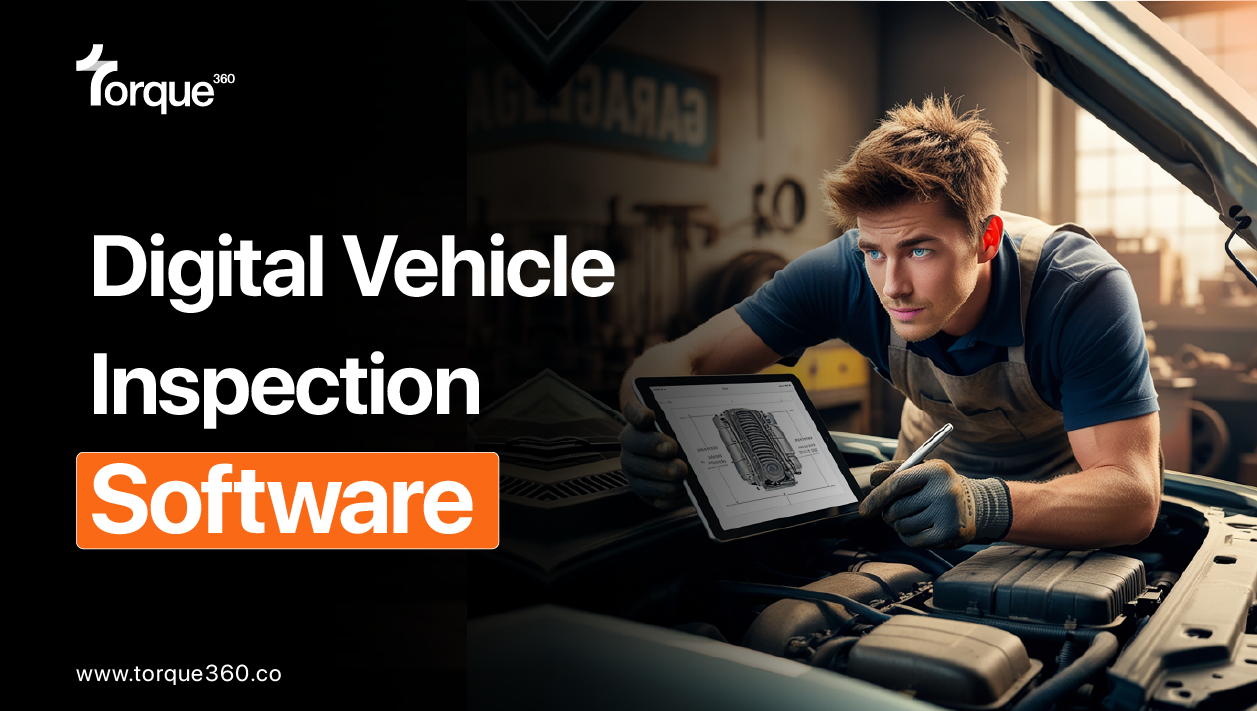The automotive repair industry has become increasingly reliant on digital solutions to enhance workflow, reduce errors, and improve the customer experience. One of the most significant advancements in this area is the use of Digital Vehicle Inspection Software. Torque360’s solution is a powerful tool that not only simplifies the inspection process but also allows you to create and customize detailed vehicle inspection checklists. This capability ensures that every inspection is thorough, organized, and tailored to the specific needs of each vehicle, making it a game-changer for auto shops and technicians alike.
In traditional vehicle inspections, technicians often rely on paper forms or mental checklists. While this may work in some cases, it’s far from efficient or foolproof. Digital checklists, on the other hand, streamline the process, ensuring that all necessary components are checked and reducing the risk of errors. With auto shop inspection software, shop owners and technicians can now create personalized inspection forms, saving time and providing a more comprehensive assessment for their customers.
Why Create Custom Checklists?
Customizable checklists are essential for ensuring a more thorough, precise, and efficient inspection. Every vehicle is different, and the specific parts or areas that need to be checked may vary depending on the make, model, and age of the vehicle. By using digital checklists, shops can design forms that are tailored to their specific needs, making it easier to track and assess individual vehicles.
For example, an older vehicle might require more detailed checks on its exhaust system, while a newer car may need more attention on its electronic components. With a customizable digital checklist, technicians can ensure that all relevant aspects are covered, reducing the risk of missed issues that could affect vehicle performance or safety. Custom checklists also make it easier to comply with industry standards and regulations, as all necessary points can be added to the form.
How Torque360’s Digital Vehicle Inspection Software Helps
Torque360 makes creating and customizing vehicle inspection checklists a simple and straightforward process. Here’s how the software works:
User-Friendly Interface
The software’s intuitive interface allows shop owners and managers to create inspection checklists without needing technical expertise. Whether you’re inspecting a sedan, an SUV, or a commercial truck, the system’s flexibility lets you design checklists that match the needs of each vehicle type. With a few clicks, you can drag and drop various inspection items, add custom sections, and adjust the level of detail required. This ease of use ensures that no important detail is overlooked.
Tailored for Different Vehicle Types
Different types of vehicles require different levels of attention. Torque360’s system allows you to create specific checklists based on the vehicle’s make, model, and year. For instance, a truck’s inspection may require checks for its braking system, suspension, and load capacity, while a sports car might require more detailed checks of its performance parts, tires, and suspension. By creating tailored inspection checklists for each vehicle type, Torque360 ensures that the technician knows exactly what to look for during the inspection.
Customizable Inspection Categories
The software allows for a high degree of customization when it comes to categorizing inspections. This means you can create categories based on your specific needs, such as engine, transmission, tires, brakes, suspension, and electrical systems. Each category can contain multiple inspection items, and the technician can check off each item as they complete their assessment. If a particular vehicle requires additional checks, those can be added with ease. Customizable categories allow for a more organized and efficient inspection process.
Easily Add Notes, Photos, and Videos
One of the standout features of Torque360 is its ability to integrate multimedia into the inspection checklist. As technicians inspect the vehicle, they can take photos or videos of specific areas that require attention and attach them directly to the checklist. This visual documentation helps technicians identify issues more clearly and gives customers an accurate view of their vehicle’s condition. In addition to photos and videos, technicians can also add detailed notes or comments about any issues they discover, ensuring that all information is recorded in one place.
Digital vehicle inspection software is particularly beneficial for communicating with customers. Instead of relying on vague descriptions, technicians can provide clear, visual evidence of any issues. When customers receive a digital report that includes both text and images, they have a much better understanding of their vehicle’s condition. This transparency builds trust and helps customers make more informed decisions about repairs.
Ensure Consistency and Standardization
Using digital checklists ensures that inspections are carried out consistently across all technicians. Whether it’s the first technician of the day or the last, the checklist will remain the same, guaranteeing that each vehicle is inspected according to the same standards. This consistency not only improves the quality of inspections but also helps maintain customer satisfaction, as customers know they will receive the same level of thoroughness each time they visit the shop.
Moreover, digital checklists make it easy to track and compare inspections over time. You can easily view previous reports, spot recurring issues, and identify trends. If certain problems arise frequently with a specific model or make, you can adjust your checklist accordingly to ensure that those issues are addressed promptly.
Benefits of Using Customizable Vehicle Inspection Checklists
The ability to create and customize vehicle inspection checklists brings several benefits to auto shops. Here are just a few:
Improved Efficiency
With customizable checklists, technicians no longer have to remember all the necessary checks for each vehicle. The checklist provides a clear, step-by-step guide, which speeds up the inspection process. Technicians can quickly go through each item, ensuring that no crucial steps are missed. The software even allows for auto-completion of certain fields, saving more time and reducing errors.
Enhanced Accuracy
Manual inspection methods are prone to human error. A technician may forget to check a certain component or miss a small but important detail. Torque360’s Digital Vehicle Inspection Software eliminates this risk by providing a detailed, digital checklist that can’t be easily overlooked. Additionally, the software automatically saves all data in real time, reducing the risk of data loss and ensuring that all information is accurately recorded.
Better Communication with Customers
By creating and customizing detailed inspection checklists, shops can offer customers more transparency and better communication. Customers can receive a complete report with all the information they need, including photos, videos, and notes on their vehicle’s condition. This level of transparency enhances trust and helps customers feel confident in the shop’s services.
Streamlined Compliance
Compliance with industry regulations and standards is crucial for any auto repair shop. Torque360’s customizable checklists make it easier to ensure that all inspections are performed according to the necessary guidelines. Whether you’re complying with local safety standards or manufacturer requirements, the software helps you keep track of what’s been checked and what still needs attention. You can easily update your checklists as regulations change, ensuring your shop remains compliant.
Real-World Example of Success
Many auto shops have already experienced the positive impact of digital inspection checklists. For instance, a study conducted by the Automotive Service Association found that shops using digital vehicle inspection software, like Torque360, experienced a 20-25% improvement in operational efficiency. Technicians were able to complete inspections faster and more accurately, while shop managers enjoyed streamlined communication and better record-keeping. Furthermore, shops that used digital reports saw a significant improvement in customer satisfaction, as customers appreciated the detailed, visual reports that explained their vehicle’s condition.
Conclusion
Torque360’s Digital Vehicle Inspection Software is a powerful tool that allows auto shops to create and customize detailed inspection checklists. By providing tailored checklists for each vehicle, streamlining the inspection process, and enhancing communication with customers, this software ensures that every inspection is thorough, accurate, and efficient.
The benefits of using customizable vehicle inspection checklists are clear: improved efficiency, better accuracy, enhanced communication, and streamlined compliance. With Torque360’s digital solution, shops can provide customers with detailed, transparent reports that build trust and satisfaction. By embracing digital checklists, auto shops can improve their workflow, reduce errors, and ultimately deliver a higher level of service to their customers.
As the automotive industry continues to evolve, adopting digital tools like Torque360’s Digital Vehicle Inspection Software will be key to staying competitive and meeting the growing expectations of customers. By investing in technology that improves accuracy, efficiency, and communication, auto shops can set themselves up for success in the future.





